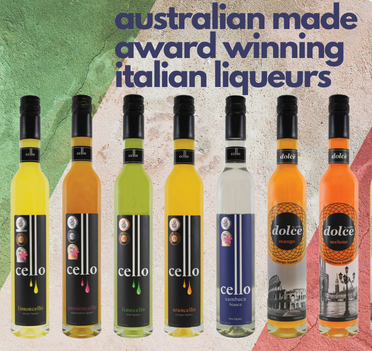Top rated

5 Tips to Choose the Right Scotch for Your Taste.
5 Beginner Friendly Tips to Choose the Right Scotch Whisky for Your Taste.
Scotch whisky is one of the most popular alcoholic beverages in the world and has a rich history that dates back centuries. With so many different types of Scotch whisky available, it can be overwhelming to choose the right one, especially if you are new to the world of Scotch. Here are five beginner-friendly tips to help you select the right Scotch whisky for your taste.
Aging
One of the most important factors to consider when choosing a Scotch whisky is the aging process. Scotch whisky must be aged for a minimum of three years in oak casks, but most Scotch whiskies are aged for much longer. The longer a Scotch whisky is aged, the smoother and more complex its flavour will be.
Aging also affects the colour of the Scotch. As it ages, the whisky will take on a rich amber colour from the oak casks, which can be a good indicator of the age of the Scotch. However, the colour of a Scotch can also be influenced by the addition of caramel colouring, so it is important to keep that in mind when making your selection.
Colour
The colour of a Scotch whisky
can also provide some clues about its flavour profile. A lighter-coloured Scotch whisky will generally have a milder, sweeter flavour, while a darker Scotch whisky will have a stronger, more complex flavour. However, it is important to keep in mind that the colour of a Scotch whisky can be influenced by factors such as aging and the addition of caramel colouring.
ABV
The Alcohol By Volume (ABV) of a Scotch whisky can also give you an idea of its strength. The ABV refers to the percentage of alcohol in the whisky and ranges from 40-60%. A higher ABV will result in a stronger, more full-bodied Scotch, while a lower ABV will produce a lighter, smoother whisky.
Barrel Cask Wood
The type of barrel cask wood used to age a Scotch whisky can also have a significant impact on its flavour. The most common types of cask wood used are American oak, European oak, and sherry casks. American oak casks impart a spicy, vanilla flavour to the Scotch, while European oak casks add a nutty, fruity flavour. Sherry casks add a sweet, rich flavour to the Scotch.
Region or Origin
The region or origin of a Scotch whisky can also influence its flavour profile. Scotland is divided into five main whisky-producing regions: Lowlands, Highlands, Speyside, Islay, and Campbeltown. Each region has its own unique climate and terroir, which results in different flavours and styles of Scotch whisky.
For example, Lowland Scotch whiskies are known for their light, floral, and mild flavours, while Highland Scotch whiskies are known for their rich, robust, and full-bodied flavours. Speyside Scotch whiskies are known for their smooth, sweet, and nutty flavours, while Islay Scotch whiskies are known for their smoky, peaty, and intense flavours. Campbeltown Scotch whiskies are known for their salty, maritime flavours.
Smoky flavours are characteristic of some Scotch whiskies, particularly those from the Islay region of Scotland. This smoky flavour is the result of the malt being dried over a peat fire, which imparts a unique, smoky flavour to the whisky. This smoky flavour is particularly prominent in Scotch whiskies such as Laphroaig, Lagavulin, and Ardbeg.
However, it is important to note that not all Scotch whiskies have a smoky flavour. Some Scotch whiskies are distilled in regions that do not use peat fires to dry the malt, resulting in a milder, less smoky flavour. Additionally, the extent to which a Scotch whisky has a smoky flavour will also depend on the level of peat used during the distillation process.
If you prefer a smoky flavour in your Scotch whisky, look for bottlings from the Islay region, or those that specifically state that they are made with peated malt. If you prefer a milder, less smoky flavour, look for Scotch whiskies from regions such as the Lowlands, Highlands, or Speyside.
In general, the smoky flavour in Scotch whisky can be an acquired taste, and may not be to everyone's liking. However, for those who enjoy the unique, smoky flavour of a peated Scotch, it can add an extra layer of complexity and depth to the whisky.
What about charred wood casks adding flavour?
The type of barrel cask wood used to age a Scotch whisky can also have an impact on its flavour. The inside of the cask is charred before it is used to age the whisky, which can add a subtle smoky flavour and various other flavours to the Scotch. The charring of the wood creates unique chemical compounds that are absorbed into the whisky, resulting in a range of flavours that can include vanilla, caramel, and toasty notes.
It is important to note that the type of wood used for the cask, as well as the level of charring, can greatly impact the flavour of the Scotch. American oak casks, for example, are often heavily charred and impart a strong vanilla flavour to the whisky, while European oak casks are typically lighter in flavour and impart more delicate notes of fruit and nuts.
In general, the type of barrel cask wood used for aging a Scotch whisky is a significant factor to consider when choosing a Scotch, and can greatly influence the final flavour profile of the whisky. Whether you prefer a Scotch with a strong, smoky flavour, or a milder, more delicate flavour, the choice of barrel cask wood can play a significant role in determining the final taste of the whisky.
In conclusion, when choosing a Scotch whisky, it is important to consider factors such as aging, colour, ABV, barrel cask wood, and region or origin. By taking these factors into account, you can select a Scotch whisky that best suits your taste preferences. Whether you prefer a light, smooth whisky or a rich, full-bodied whisky, there is a Scotch whisky out there for everyone. So, go ahead, explore the world of Scotch whisky, and find the perfect one for you!























































 Login with Google
Login with Google
